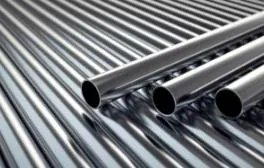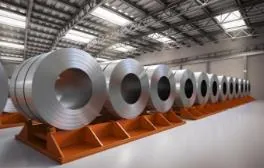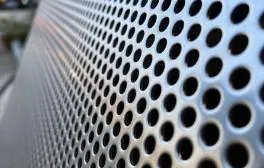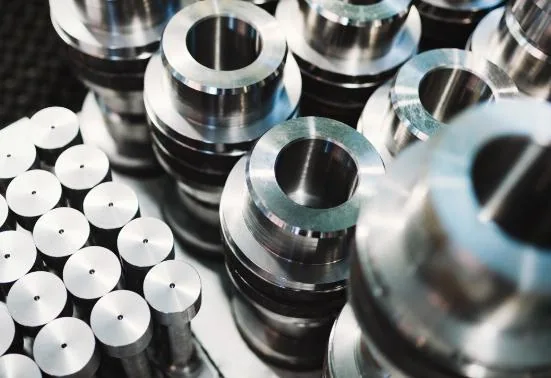Stainless Steel Grades
Stainless steel comes in a variety of types, each with a unique composition that delivers distinct advantages. These alloys are categorized into five families, which are further divided into grades with specific properties such as toughness, magnetism, and corrosion resistance. As a global leader in stainless steel alloy distribution, Continental Steel & Tube Company offers quality products backed by unparalleled expertise. Below, you can learn more about our extensive product line, which includes specialty Duplex grades, large-diameter bars, and much more.
Types of Stainless Steel Grades and Families
Stainless steel grades are divided into five categories, based on their crystalline structure or the type of heat treatment used to develop their attributes. Two of the categories, austenitic and ferritic, are widely used, while the martensitic, duplex, and precipitation hardening categories are more specialized.
- Austenitic. The addition of nickel, nitrogen, or manganese creates austenitic stainless steel’s crystal structure. Austenitic stainless steels are more expensive than ferritic grades but offer better formability and weldability, as well as excellent toughness.
- Ferritic. Ferritic stainless steel gets its crystalline structure from iron atoms. It is more affordable than other families because it does not contain nickel. While it offers excellent resistance to chloride stress corrosion, it is less formable and weldable than austenitic stainless steel.
- Duplex. This family includes proprietary and more recently developed alloys. They often display a combination of austenitic and ferritic stainless steel properties.
- Martensitic. Martensitic stainless steels are more uncommon than other families but excel in applications that require a precision, hardened edge.
- Precipitation-hardening. Also relatively uncommon, precipitation- hardening alloys are magnetic and provide moderate to good corrosion resistance.
Questions? Speak with a Metal Specialist.
Contact Us200 Series: Austenitic Chromium-Nickel-Manganese Alloys
Manganese and nitrogen are partially substituted for nickel, improving cost-effectiveness while resulting in a 30% higher yield strength than grade 304.
Due to a high manganese content, this grade is more economical than the 300 series. It offers good toughness and corrosion resistance.
This type offers good ductility, weldability, and hardening rate, as well as fair corrosion resistance.
300 Series: Austenitic Chromium-Nickel Alloys
Known for its corrosion resistance and excellent ductility, type 301 offers good weldability and better wear- and fatigue-resistance than type 304.
This type features the same corrosion resistance as type 304 but offers improved strength because of its additional carbon content.
The addition of phosphorus and sulfur makes this grade easier to machine than 304. It is also known as A1, according to the International Organization for Standardization ISO 3506.
This type is also known as 18/8 or A2, in accordance with International Organization for Standardization ISO 3506. This is the most commonly used grade of stainless steel.
304L stainless steel features an ultra-low carbon content and additional nitrogen to meet the mechanical properties of type 304.
The high-carbon version of type 304, 304H offers similar corrosion resistance to 304L but can experience carbide precipitation in weldments.
This type offers high corrosion resistance, excellent strength, and improved temperature resistance than type 304.
309S is a lower-carbon version of type 309, designed to offer improved weldability and minimized carbide precipitation.
High nickel and chromium content provide superior oxidation resistance and better strength than type 304.
A lower carbon version of type 310, type 310S offers outstanding corrosion resistance and better performance than types 304 and 309.
Type 316 is the second most commonly used grade of stainless steel, also known as A4 or marine grade. This type is a versatile, high-performance option.
Type 316L is the low carbon version of type 316, with improved corrosion resistance.
A high-carbon version of type 316, type 316H was developed for high-temperature environments.
This type is a low-carbon version of 317 that offers improved corrosion resistance compared to 316 and good formability.
Type 321 features similar characteristics to type 304 but, due to the addition of titanium, there is less risk of weld decay.
A higher carbon version of type 321, type 321H features titanium for stability. It offers similar machinability to type 304.
Type 347H is a high-carbon alloy that's used in applications that demand high-temperature resistance.
400 Series: Ferritic and Martensitic Chromium Alloys
This alloy features 11% chromium and 8% nickel, creating heat resistance but poor corrosion resistance.
The most inexpensive stainless steel alloy, type 409 is made using iron and chromium. This grade is often used to manufacture automobile exhausts.
Type 410 is a high-strength martensitic alloy that offers wear resistance but minimal corrosion resistance.
410S is a general-purpose, low-carbon, non-hardening version of type 410. 410S remains ductile even when cooled rapidly.
Type 416 is a cost-effective martensitic alloy that is easy to machine due to its additional sulfur content.
Also known as surgical steel, this cutlery-grade martensitic alloy offers excellent polishability.
Type 430 is an excellent option for decorative applications, such as automotive trim. It offers good formability with reduced corrosion and temperature resistance.
Additional carbon content allows this grade to retain better edges. Type 440 is a higher grade of cutlery steel that is one of the hardest stainless steel alloys. It is available in three grades: 440A, 440B, 440C, and 440F.
600 Series: Precipitation Hardening Alloys
Duplex Stainless Steel
Duplex 2202 is an austenitic-ferritic alloy that offers improved mechanical strength and excellent stress corrosion resistance.
Also known as UNS S32205, this nitrogen-enhanced alloy offers high strength and much higher corrosion resistance than other austenitic stainless steels.
Duplex 2304 is a molybdenum-free alloy that is a blend of ferritic and austenitic qualities. It is often used to replace type 304L and 316L.
Duplex 2507 is an ideal option for applications that require exceptional strength and corrosion resistance.
Also referred to as Super Duplex Stainless, this alloy is designed for use in the most rigorous environments. It offers corrosion resistance in marine settings and excellent strength.
Additional Stainless Steel Grades
Considered to be the strongest copper alloy available, this material is often used in military and marine applications.
15-5 PH is a martensitic, precipitation-hardening stainless steel that offers good strength and corrosion resistance.
17-4 PH is a popular material due to its combination of strength and corrosion resistance.
Type 904L is a low-carbon version of type 904 that offers strong corrosion resistance, excellent formability, and non-magnetic properties.
This is a very high-end austenitic stainless steel designed to resist chloride stress corrosion cracking, pitting, and crevice corrosion. This grade offers twice the strength of the 300 series.
Continental Steel & Tube, Your Trusted Stainless Steel Supplier
Continental Steel & Tube Company has been a trusted source of stainless steel forms since 1985. Our clients come from demanding backgrounds, including marine, aerospace, construction, oil and gas, food processing, military, medical, and more. Our specialists can help you identify the best type of stainless steel for your project and quickly access the forms you need.
As part of our commitment to quality, we are ISO 9001:2015 certified and AS9120B:201 registered. Contact our metal experts with any questions or request a quote today to get started.






